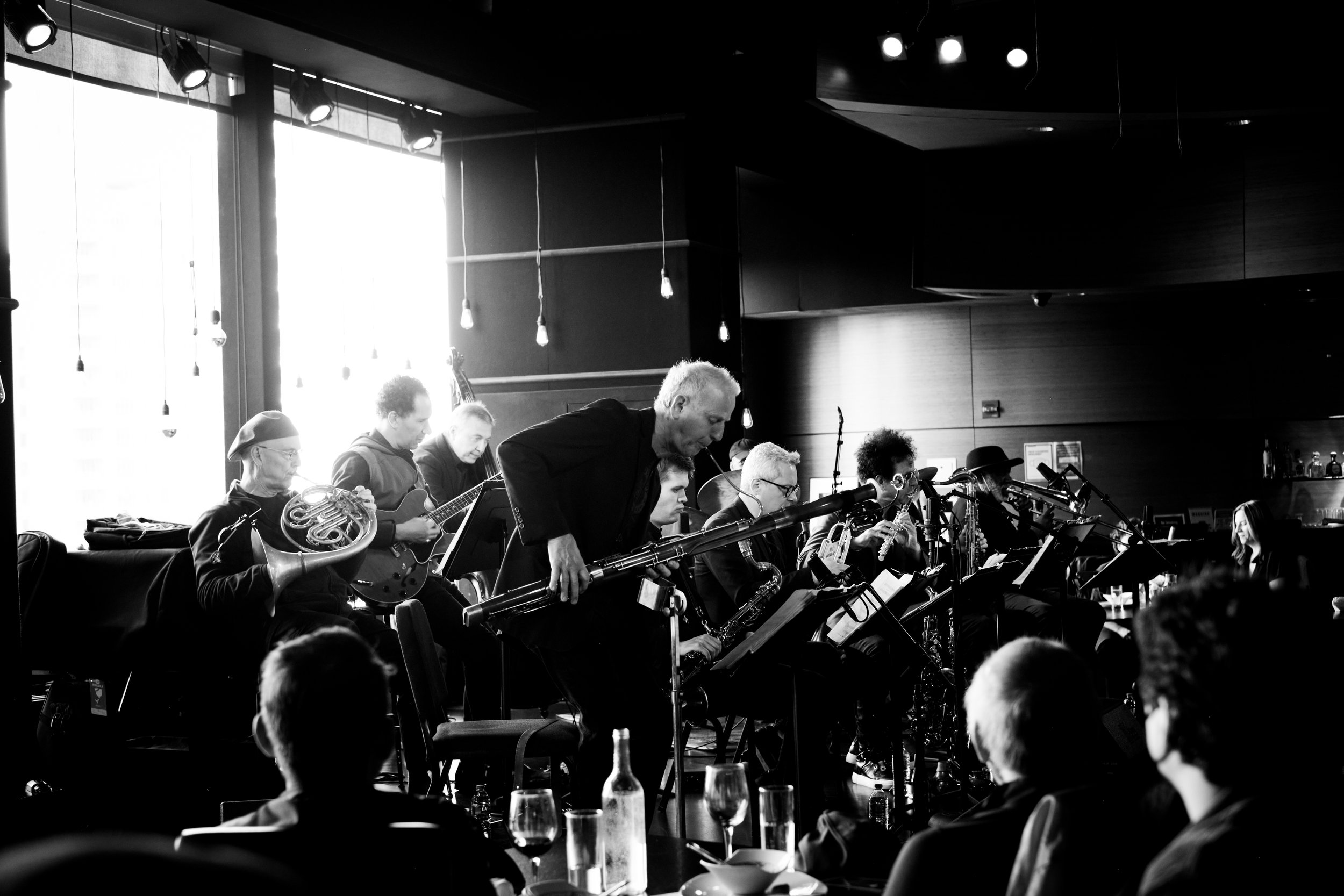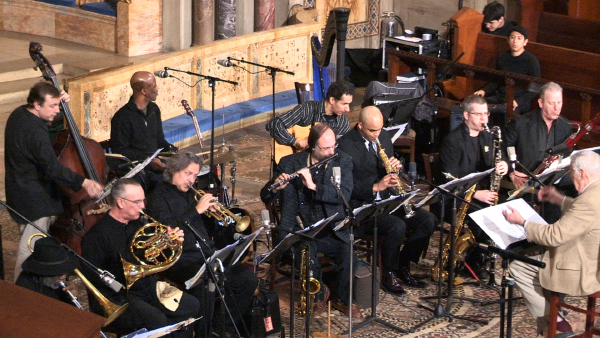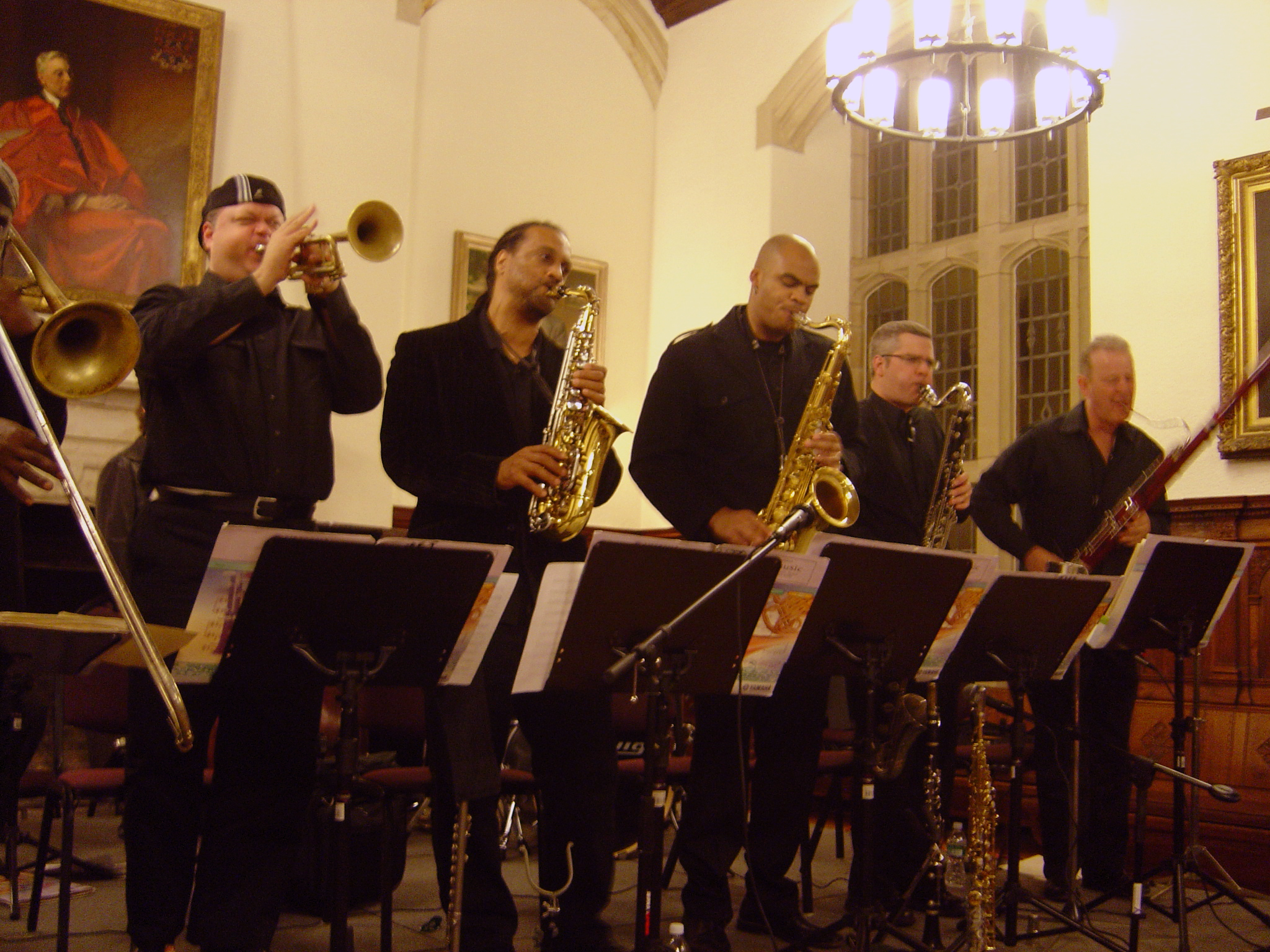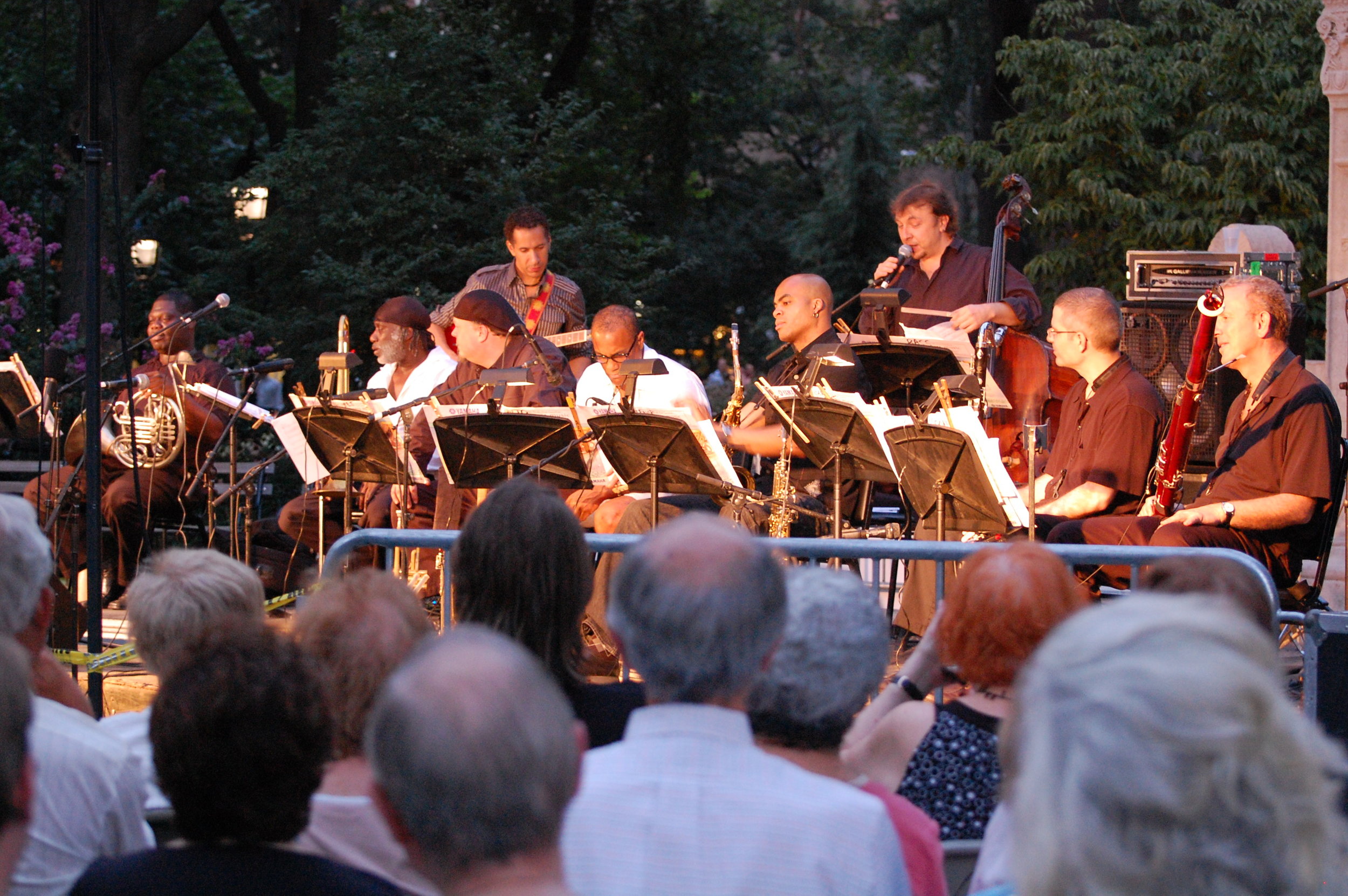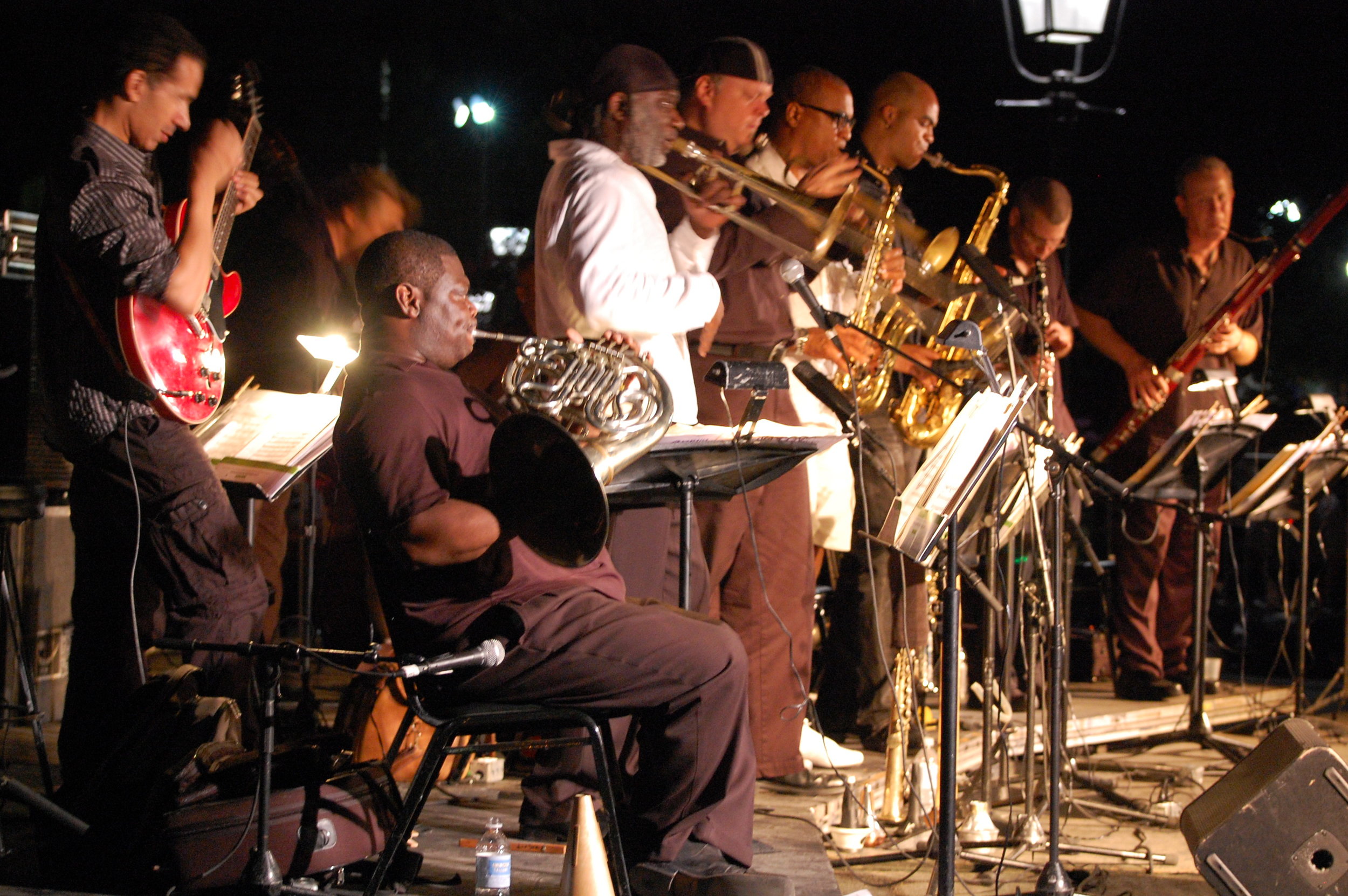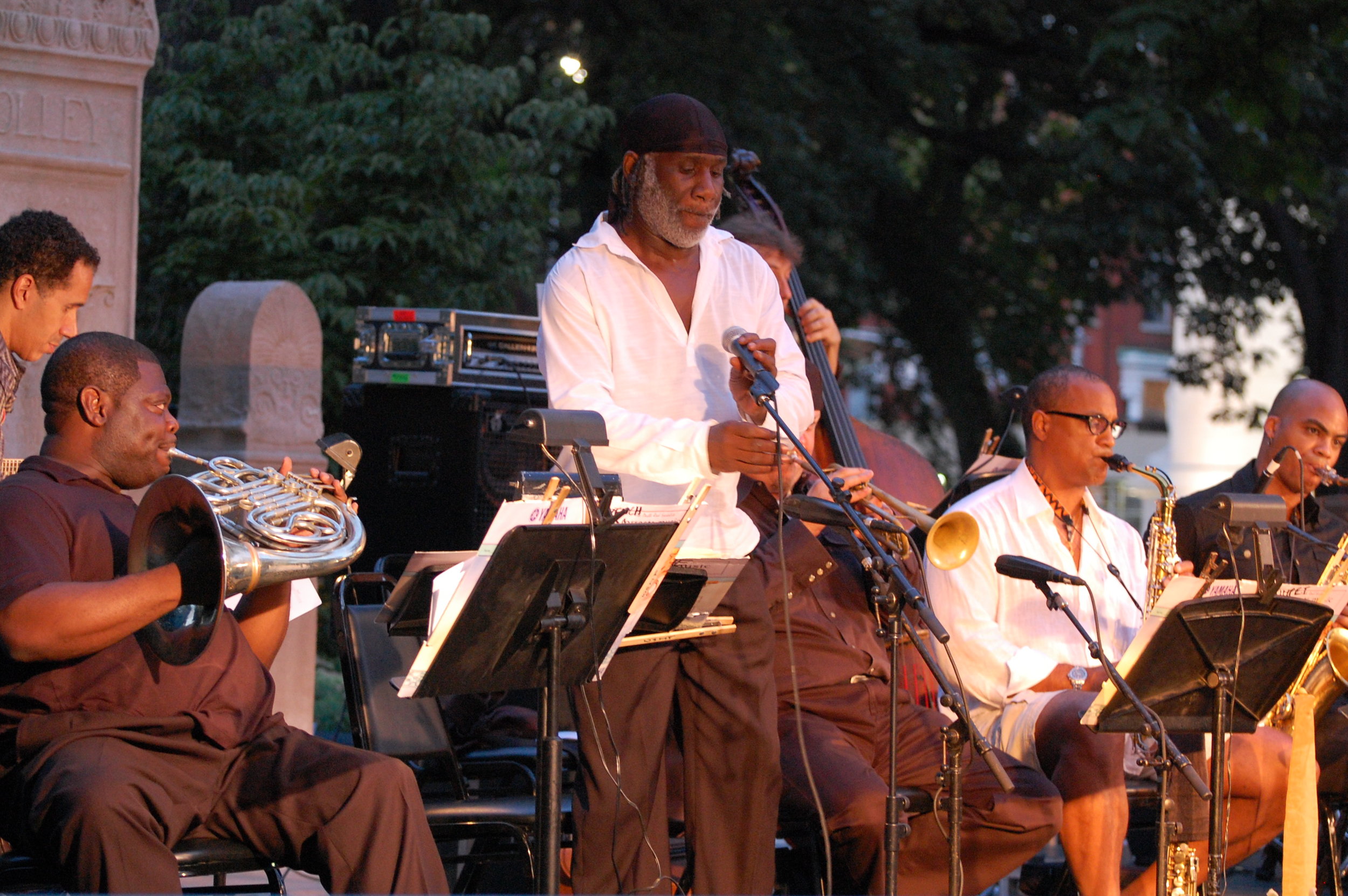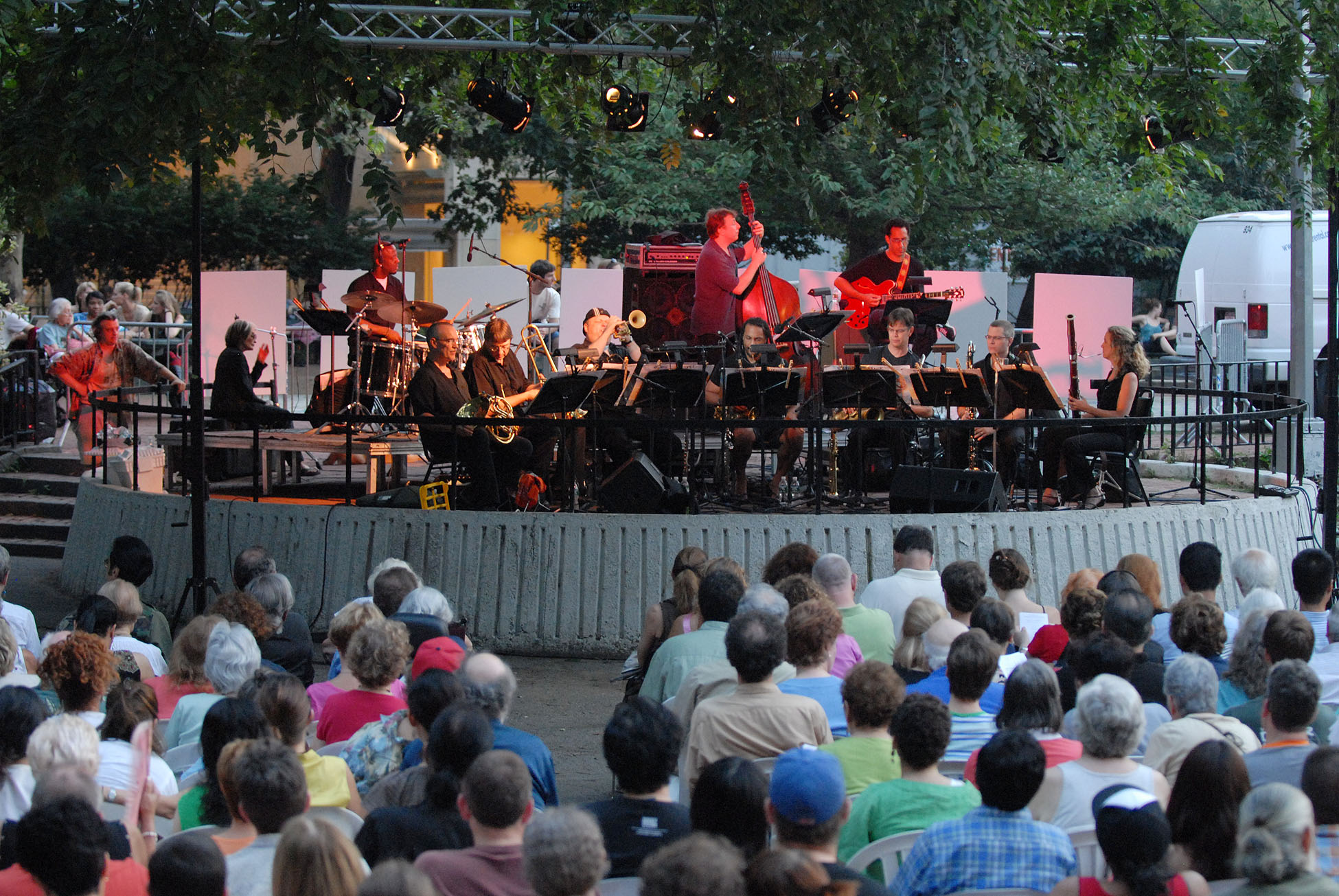“The Orchestra upholds the boisterous Mingus legacy while delving even deeper into his repertory.”
The Charles Mingus Orchestra
began alternating performances with its older sibling, the Mingus Big Band, during a 14-year tenure at New York's Fez Under Time Cafe. In March and April of 2005, the Mingus Orchestra performed across the street from Fez for a series of extraordinary late-night performances at Joe's Pub. More recently, Mingus Mondays celebration ran at Jazz Standard for nearly 12 years rotating the the Orchestra, the Dynasty, and the Big Band, becoming a local culture institution halted only by the COVID-19 worldwide pandemic. Now the Charles Mingus Orchestra marks its triumphant return to the live stage.
Assembled in 1999 by Sue Mingus, the 10-piece Mingus Orchestra plays with the intensity of Mingus Big Band, with a focus on composition and exploration of Mingus’ more diverse works. Its distinctive sound and textures emerge from an expanded repertory and more exotic instrumentation including bassoon, bass clarinet, French horn, and guitar — instruments not heard in the Big Band, and mostly non-traditional to jazz and modern improvisational music. The other six instruments are chaired by musicians that also perform in Mingus Big Band, and include drums, bass, trombone, trumpet, alto and tenor saxophone, with additional doublings on flute, soprano and clarinet.
“The lean, sharp ten-piece band features such uncommon instrumentation as a bassoon and a French horn, but this isn’t staid chamber jazz. When the spirit of the late, great one hits them, they steam.”
“ I think it is time our children were raised to think they can play bassoon, oboe, English horn, French horn, lull percussion, violin, cello. The results would be-well the Philharmonic would not be the only answer for us then. If we so-called jazz musicians who are the composers, the spontaneous composers, started including these instruments in our music, it would open everything up, it would get rid of prejudice because the musicianship would be so high in caliber that the symphony couldn’t refuse us.”
“Had American symphony orchestras not discriminated against African-American musicians throughout much of the 20th century, Charles Mingus might have led an entirely different career. Mingus was as much a student of Beethoven and Debussy as of Fats Waller and Duke Ellington, and his classical aspirations found their outlet in doz ens of compositions written for a sort of jazz-band-plus that included non-jazz instruments like bassoon, oboe, and French horn. It is to this often-overlooked portion of Charles’ legacy to which the Mingus Orchestra is devoted.”
2010-2011 Tour of the Mingus Orchestra was made possible by the National Endowment for the Arts as part of American Masterpieces: Three Centuries of Artistic Genius.
